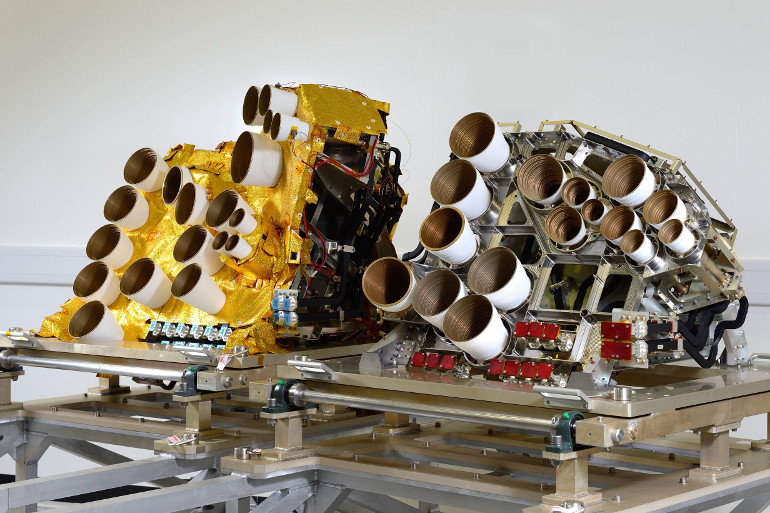
Multiple spot-beam antennas are becoming increasingly common on satellites because they offer great flexibility and make optimal use of the spacecraft's radio power. Multi-beam antennas, however, require feed arrays that are large, complex and dimensionally stable.
To support the next generation of large telecom satellites, Airbus Defence and Space UK initiated the development of the Large Ku-band Multi-spot Feed Array (LMFA) with the support of ESA through the ARTES Competitiveness & Growth programme. As part of the activity, a new feed array configuration was developed in which a single feed cluster is used to illuminate multiple reflectors. A Proto-Flight Model of each of the clusters was manufactured in parallel with the ARTES activity and these are now mounted on a spacecraft scheduled to be launched in the coming months. The design guidelines developed during this contract and the lessons learned as a result of performing the work have since been successfully incorporated into two further commercial contracts.
“The LMFA is not a single universal design which meets the needs of all future missions, since the layout and scale of these multi-beam feed arrays will vary significantly from mission to mission, depending on the coverage requirements of the customer,” says Airbus D&S's Tom McConnell, Project Manager for LMFA. “But through the use of innovative design approaches, this design can be easily adapted for other future missions. With the support of ESA, we've been able to develop the tools required to speed up design iterations of complex single-feed-per beam multi-reflector antennas for future satcom systems.”
“Thanks to the results of this ARTES activity, Airbus D&S now has multi-beam array capability integrated into large stable structures, and with it an enhanced ability to compete in an increasingly challenging world market,” says Arturo Martín Polegre, Flight Products Engineer at ESA.



